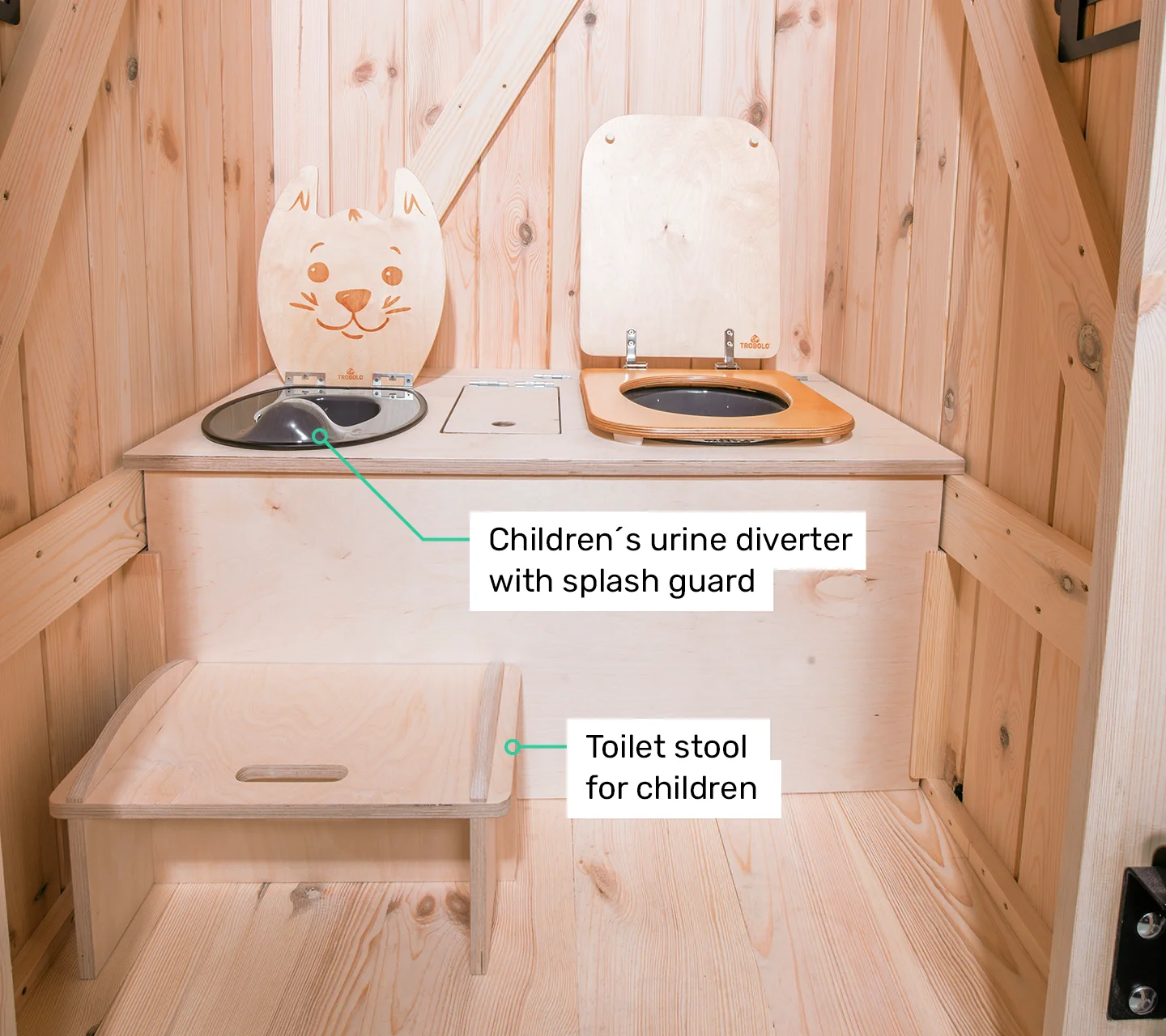A composting toilet is an eco-friendly waste management system that decomposes human excreta into compost. It operates without water, using natural processes to break down waste.
Composting toilets present an innovative solution for areas lacking conventional sewage systems. They offer a sustainable alternative to traditional toilets by transforming waste into valuable fertilizer, ideal for gardening and agriculture. These toilets are especially beneficial in remote or off-grid locations, minimizing water usage and reducing the environmental impact of human waste.
Their design varies from simple, self-contained units to more complex systems with separate composting chambers. By leveraging the natural composting process, these toilets contribute to a closed-loop system, promoting waste reduction and resource conservation. They are an integral part of green living practices, supporting a healthier planet.
The Basics Of Composting Toilets
A composting toilet is a type of toilet that uses no water. Instead, it turns human waste into compost. This compost is like a soil fertilizer. These toilets help save water and reduce waste.
Composting toilets work by separating liquid and solid waste. Solid waste mixes with materials like sawdust or peat moss. This mix breaks down into compost over time. The process needs air, the right temperature, and moisture levels. It’s a natural way to deal with waste. People use them in homes, parks, and remote areas.
Environmental Benefits
Composting toilets offer significant environmental advantages. One key benefit is dramatic water savings. Traditional toilets use about 1.6 to 6 gallons per flush. Composting toilets need no water, conserving this vital resource. Imagine the impact over a year!
These eco-friendly systems also help by minimizing waste. Instead of sewage, they produce a nutrient-rich compost. This compost can enrich soil in gardens and reduce the need for chemical fertilizers. It’s a win for both your garden and the planet!
Types Of Composting Toilets
Composting toilets come in various types, catering to different needs. Self-contained units are perfect for small spaces. They house all components in one compact form. This makes them ideal for single bathrooms or mobile homes. Easy to install, they require minimal setup.
Centralized systems, on the other hand, work well for larger buildings. They connect multiple toilets to a single composting unit. This setup is more complex but efficient for heavy use. Such systems often feature advanced technology for odor control and faster composting.
| Type | Best For | Installation | Features |
|---|---|---|---|
| Self-Contained Units | Small spaces, mobile homes | Easy, minimal setup | Compact, all-in-one design |
| Centralized Systems | Larger buildings | Complex, professional install | Advanced odor control |

Credit: trobolo.com
Installation Considerations
Proper planning for space and sizing is crucial for composting toilet installation. Measure your area to ensure a good fit. Compact models are available for smaller spaces.
Good ventilation is key to control odors and manage moisture. Ensure adequate airflow with a vent pipe. Drainage systems also need attention. They prevent liquid overflow. Consult manuals for specific requirements.
Usage And Maintenance
Maintaining your composting toilet is easy with a few simple steps. Each day, add a scoop of sawdust after use. This helps with odor and composting. Keep the unit dry and well-ventilated.
For regular upkeep, check the compost level weekly. Empty it when it’s three-quarters full. Twice a year, clean all parts with natural soap and water. Regular maintenance keeps your toilet safe and odor-free.

Credit: www.amazon.com
Common Misconceptions
Many people think composting toilets are unclean. This is not true. Modern designs control odor effectively, keeping the air fresh. Special features break down waste without smell.
Concerns also arise about use in hot or cold places. Composting toilets work well in most climates. They are built to handle extreme temperatures. Proper maintenance is key.
Regulatory And Legal Issues
Understanding local building codes is key for composting toilet installation. Before starting, one must check with local authorities regarding permits. This ensures the process aligns with specific area regulations. Failure to comply can lead to legal consequences or removal of the unit.
Compliance with health regulations is equally important. It safeguards community health and prevents environmental contamination. Regular maintenance and proper use are critical to meet health standards. Compliance certifies that the composting toilet is safe and hygienic.
Case Studies
Residential Success Stories highlight the benefits of composting toilets. Many families report significant water savings. Their gardens thrive with nutrient-rich compost. Maintenance is surprisingly simple, appealing to eco-conscious homeowners.
Composting Toilets in Public Spaces are becoming popular. Parks, rest areas, and hiking trails use them. They reduce water use and prevent sewage overflows. Visitors appreciate the clean, odor-free facilities.
Future Prospects
Composting toilet technology is growing fast. New designs are making them easier to use and more efficient. Odor management systems have improved greatly. This means they smell better. Many now have electricity-free options. These are good for places without power.
People are learning more about these toilets. Workshops and online courses are teaching them. Social media also helps spread the word. More people are starting to use them. They are using them in homes, parks, and festivals. This is good for our Earth.

Credit: www.amazon.com
Frequently Asked Questions
What Are The Drawbacks Of A Composting Toilet?
Composting toilets can require frequent maintenance and manual removal of waste. They may emit unpleasant odors if not managed properly and have higher initial costs. Limited use in cold climates and potential for user error also pose challenges.
Where Do You Empty A Composting Toilet?
Empty compost from a composting toilet into a dedicated compost pile or bin. Ensure it decomposes fully before using it as fertilizer in non-food gardens. Always follow local regulations for disposal.
Do All Composting Toilets Need To Be Emptied?
Yes, all composting toilets require periodic emptying, as they accumulate composted material that needs removal and proper disposal or use.
How Do You Wipe With A Composting Toilet?
Use only the type of toilet paper recommended by the manufacturer, typically single-ply. Wipe as usual, then drop the paper directly into the composting area. Avoid using wet wipes or non-compostable materials, as these can disrupt the composting process.
Conclusion
Embracing a composting toilet is a step towards sustainable living. These systems reduce water usage and lower waste production. They convert human waste into useful compost, benefiting the environment. Consider making the switch to promote ecological balance and resource conservation.
Join the movement towards a greener future!
